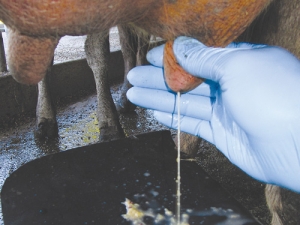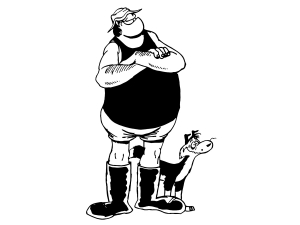Farmers may be missing out on animal health benefits because there is insufficient culture testing to find out what bugs are causing mastitis.
This is the message from Scott McDougall, clinical veterinarian and research scientist at DairyNZ.
Culture testing can enable a farmer to better understand what bugs are moving through his herd and what he can do about them/it. This pinpointing of specific bacteria enables a farmer to respond using the most appropriate, narrow-spectrum antibiotic as soon as he identifies the problem. And this is also another step in counteracting antimicrobial resistance.
This topic this was a key theme at the NZ Veterinary Association conference in Hamilton last week.
But McDougall says smarter and faster technology is needed for culture testing for dairy farmers.
"When you ask farmers how a drug works, [their understanding is] that it's all clinical outcomes. They don't do culture; very little culture is done onfarm or in the lab," McDougall told the conference.
"If clinical science doesn't resolve it, the farmer says 'this drug doesn't work' and gets another drug – rightly or wrongly. We [vets] can debate whether that is the right thing to do, but that's what farmers do. Farmers don't see a lot of value in culture; they don't perceive they get much benefit."
A survey of vets showed they aren't using culture either. The barriers are related to perceptions about whether they were getting the right answer, price and timing -- such as waiting 48 hours onfarm and having to bring samples into the vet practice and send them out to a laboratory.
However, a recent study asking Dutch farmers about how they use culture showed they see it as a way of choosing antibiotics. Dutch farmers perceive the best advantage of culture is to pinpoint whether it is bug 'A' or 'B' and therefore whether they should use drug 'X' or 'Y'," McDougall said.
"Wearing my vet hat [I would say] probably the most important thing I get out of culture is what it tells me about epidemiology: what bugs are going through this herd, why those bugs are moving around and what management steps we could take to try to, for example, reduce cow spread of the particular bug.
"So there is major misunderstanding out there about what culture can do for you; and we have a major education job to do here."
In the Dutch survey, 71% of farmers said they would submit culture if they got a result within 12 hours – so lack of rapid turnaround is perceived as a major impediment to the uptake of culture systems. Reliability was the major thing the Dutch farmers were looking for, quick turnaround and then cost.
A UK medical study showed that doctors initially prescribed broad spectrum antibiotics to patients presenting symptoms of bacterial infections, got tests done and were meant to change the antibiotics to a narrow spectrum as soon as the test results pinpointed the bug. But this study showed that, in fact, the last step does not happen – it involves tests, re-contacting patients and changing drugs.
"As veterinarians we should be doing this but, in fact, very little is done."
If very rapid diagnostics were built into the veterinary consultation, decisions could be made in real time and appropriate decisions made in two or three days.
"This would mean we would use the appropriate narrow spectrum antibiotics from day one -- a much better way of doing it. But the biggest limitation is the tests. We are using 120-130-year-old technology to crack a 21st century problem."
A lot of research work is going into smarter and quicker diagnostics – rapid culture – so vets can make better decisions. A US study using an algal plate and a decision tree based on whether the cow needed immediate treatment or could wait for results cut the use of antimicrobials by 56%. The method did not change the cure rates or any other important factors.
"By reducing antimicrobial use by 50% they did not have any bad downstream effects in terms of cow health and outcome or bulk somatic cell count."
McDougall says they are replicating that study with a slightly different approach. They have enrolled six herds with 6200 cows in the North and South Island. They have a slightly more complex decision tree. The study has been underway for 12 months and results are being analysed now.
Much work is required to establish these systems; compliance on farm has been an issue – getting farmers to follow protocols.
Some farmers have done it well but others have dropped the ball. "So it's not for everybody – only a subset of farmers can do it."
He was surprised at how few 'no growths' they were getting. With fresh milk, a higher proportion of tests were giving a result than they get from the frozen milk they as scientists often work with. It is known that when you freeze milk samples you reduce the bug count.
The farmers may have been choosing only the more severe cases to treat, contributing to fewer 'no-growths'.
With the low proportion of 'no growth' dropping out of the study, McDougall's guess on the results is that they will not have reduced the antimicrobial usage as the US study did. But they will be prescribing much smarter, using narrow-spectrum drugs to target the right bacteria.
New technology coming to the market from Otago University is a culture based system that gives a limited number of bacterial results but gives sensitivity testing within 24 hours. This would enable a vet to detect certain penicillin resistant bacteria and go to the correct drug immediately.


















